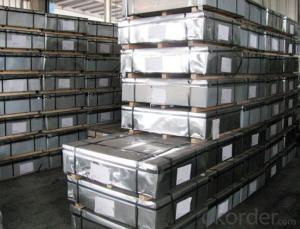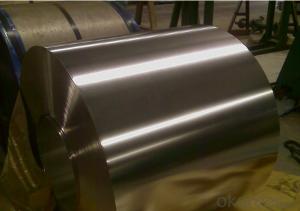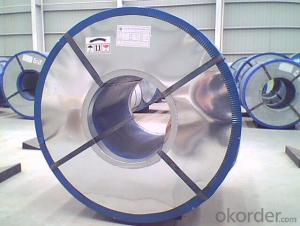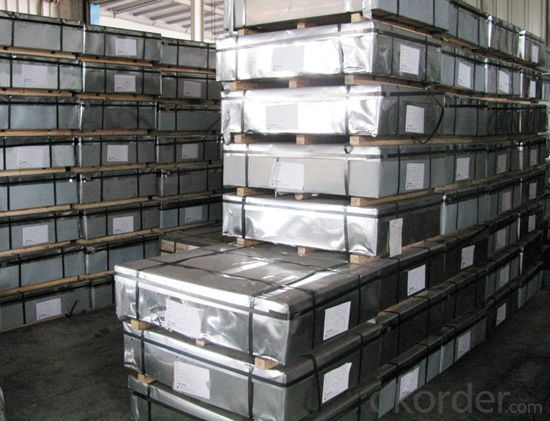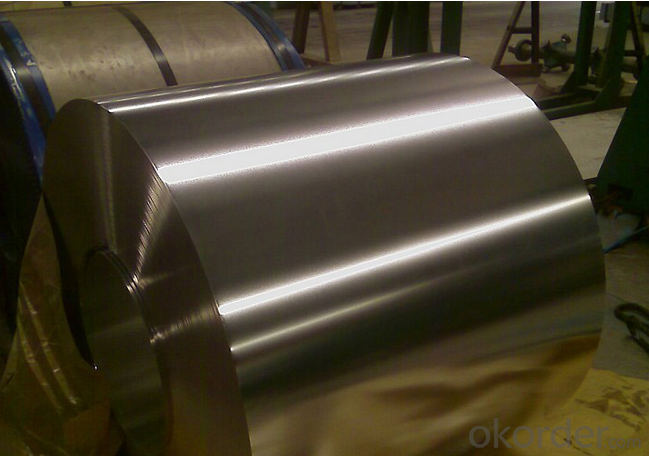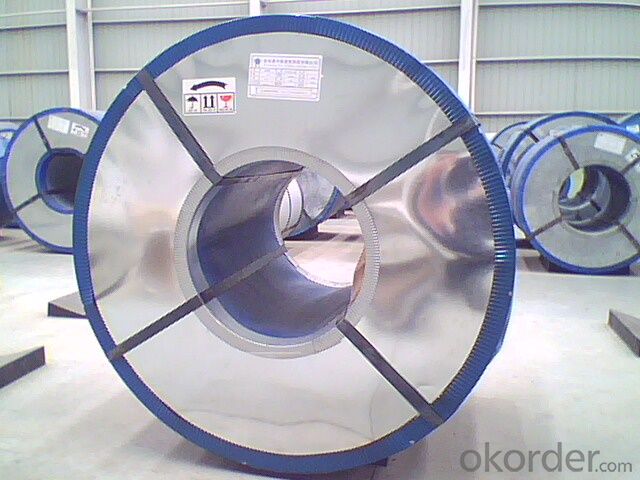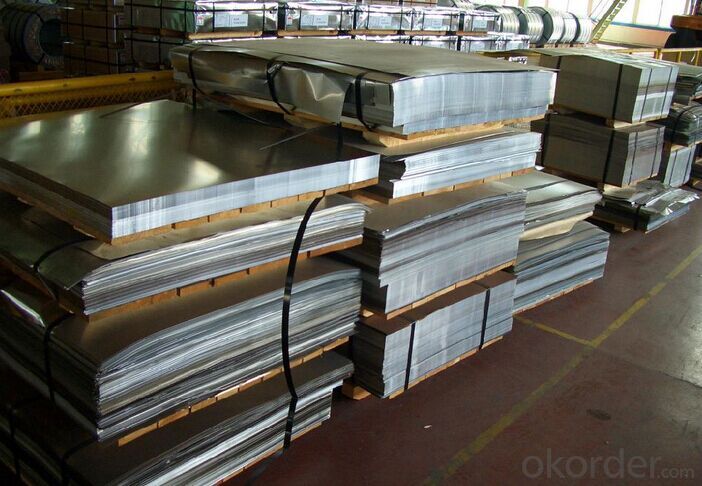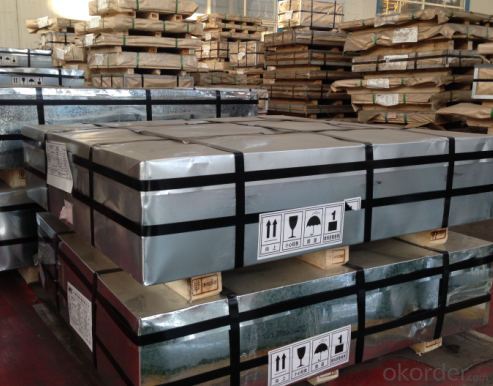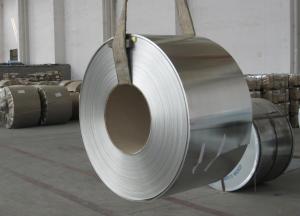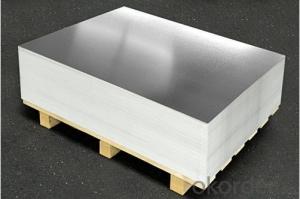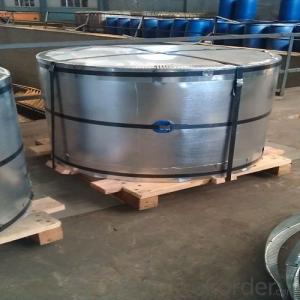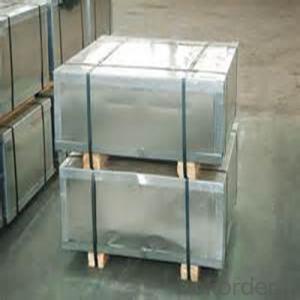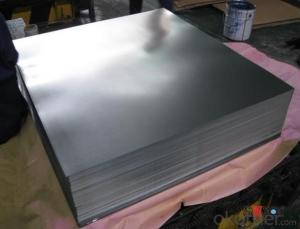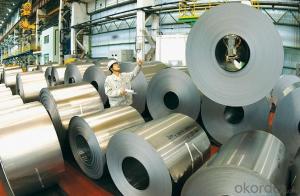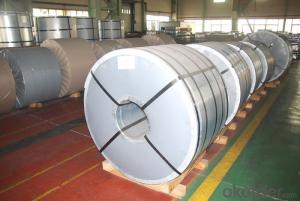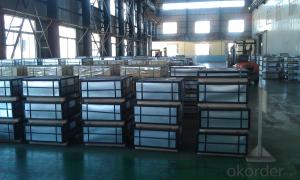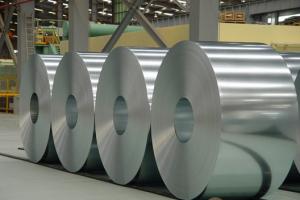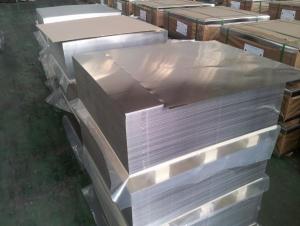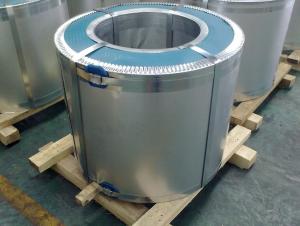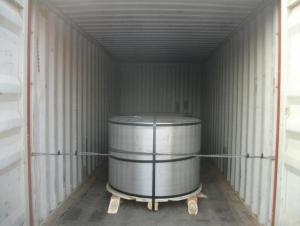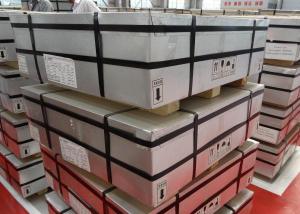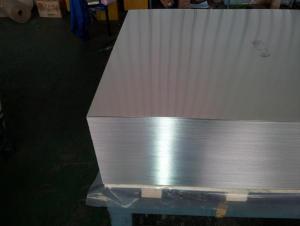Tinplates (ETP) Coil and Sheets for Foods Packaging
- Loading Port:
- Tianjin
- Payment Terms:
- TT OR LC
- Min Order Qty:
- 25 m.t.
- Supply Capability:
- 7000 m.t./month
OKorder Service Pledge
OKorder Financial Service
You Might Also Like
1.Structure of Tinplate (ETP) Coil and Sheets for Foods Packaging Description
Electrolytic Tin Plate Coils and Sheets for Foods Metal Packaging, is one thin steel sheet with a coating of tin applied by electrolytic deposition. Tinplate made by this process is essentially a sandwich in which the central core is strip steel. This core is cleaned in a pickling solution and then fed through tanks containing electrolyte, where tin is deposited on both sides. As the strip passes between high-frequency electric induction coils, it is heated so that the tin coating melts and flows to form a lustrous coat.
2.Main Features of the Tinplate (ETP) Coil and Sheets for Foods Packaging
Appearance – Electrolytic Tin Plate is characterized by its beautiful metallic luster. Products with various kinds of surface roughness are produced by selecting the surface finish of the substrate steel sheet.
Paintability and printability – Electrolytic Tin Plates have excellent paintability and printability. Printing is beautifully finished using various lacquers and inks.
Formability and strength – Electrolytic Tin Plates have got very good formability and strength. By selecting a proper temper grade, appropriate formability is obtained for different applications as well as the required strength after forming.
Corrosion resistance – Tinplate has got good corrosion resistance. By selecting a proper coating weight, appropriate corrosion resistance is obtained against container contents. Coated items should meet 24 hour 5 % salt spray requirement.
Solderability and weldability – Electrolytic Tin Plates can be joined both by soldering or welding. These properties of tinplate are used for making various types of cans.
Hygienic – Tin coating provides good and non toxic barrier properties to protect food products from impurities, bacteria, moisture, light and odours.
Safe – Tinplate being low weight and high strength makes food cans easy to ship and transport.
Eco friendly – Tinplate offers 100 % recyclability.
Tin is not good for low temperature applications since it changes structure and loses adhesion when exposed to temperatures below – 40 deg C.
3.Tinplate (ETP) Coil and Sheets for Foods Packaging Images
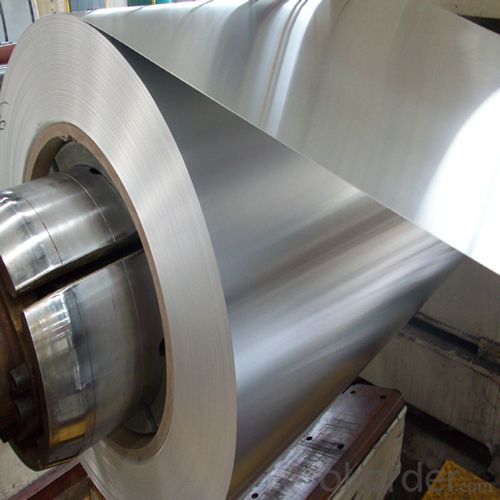
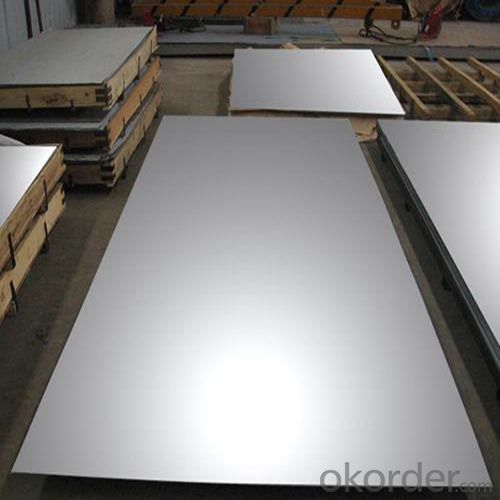
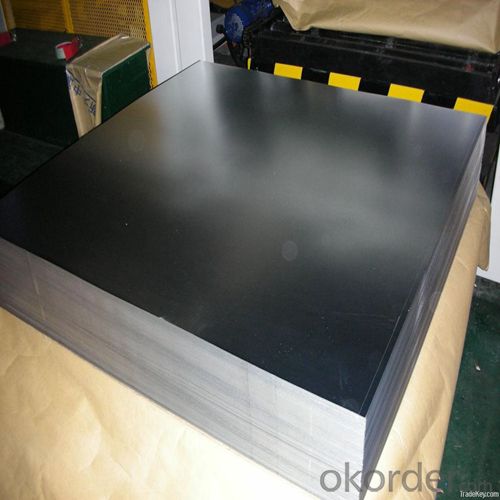
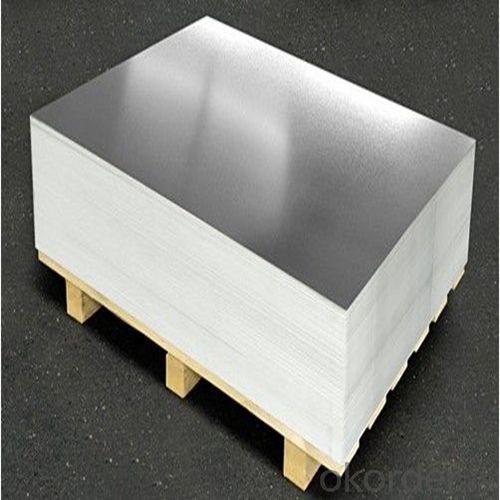
4.Tinplate (ETP) Coil and Sheets for Foods Packaging Specification
Standard | ISO 11949 -1995, GB/T2520-2000,JIS G3303,ASTM A623, BS EN 10202
|
Material | MR,SPCC |
Thickness | 0.15mm - 0.50mm |
Width | 600mm -1150mm |
Temper | T1-T5 |
Annealing | BA & CA |
Coil Inner Diameter | 508mm |
Weight | 6-10 tons/coil 1~1.7 tons/sheets bundle |
Passivation | 311 |
Oil | DOS |
Surface | Finish,bright,stone,matte,silver |
5.FAQ of Tinplate (ETP) Coil and Sheets for Foods Packaging
- How are the Electrolytic Tin Plates specified?
The Electrolytic Tin Plates are specified as per the steel base, extent of tempering, the coating weight, annealing method and the surface finish.
- How many types there are for base steels?
The base steels are of three types: Type MR, L, D
-How to place .an order or contact you ?
Please send us Email. we will give you a quick response in seconds .
- How is your quality ?
All our quality is prime even the secondary quality . We have many years experience
In this field with serious quality control standard . Advanced equipment, We welcome your visit to our factory .
- Q: What are the main regulations governing tinplate production?
- The main regulations governing tinplate production vary depending on the country and region. However, some common regulations include standards for the composition of the tinplate, such as the maximum allowable levels of impurities and the required thickness of the tin coating. Other regulations may focus on safety measures, including guidelines for handling hazardous materials used in the production process. Additionally, environmental regulations often require tinplate manufacturers to comply with waste management and emissions control standards to minimize the impact on the environment.
- Q: How is tinplate tested for corrosion resistance?
- Tinplate is typically tested for corrosion resistance through various methods such as salt spray testing, electrochemical impedance spectroscopy, and visual inspection. These tests help assess the durability of the tin coating and its ability to protect the underlying metal from corrosion in different environments.
- Q: Is tinplate safe for food contact?
- Yes, tinplate is generally considered safe for food contact. It is a commonly used material for food packaging due to its protective properties and ability to resist corrosion, ensuring the safety and quality of the food products stored inside.
- Q: How is tinplate coated for cosmetic packaging?
- Tinplate is typically coated for cosmetic packaging using a process known as electrolytic tin coating. This involves immersing the tinplate in an electrolyte solution and passing an electric current through it, causing a layer of tin to form on the surface of the tinplate. This tin coating provides a protective barrier against corrosion and enhances the aesthetic appearance of the packaging.
- Q: Tinned iron and iron matte tin in difference
- While in tinplate iron or iron matte silver, the surface is sandy, so people often referred to as silver iron, its price is a tin material price is more expensive, generally can usually used without printing packing, for printed cans is usually to is sandy, it is generally. Iron printing, matte iron tensile and hardness of tin iron generally not good, some specifications of tinplate is not suitable for stretching relatively large.
- Q: How does tinplate contribute to the performance of ammunition?
- Tinplate contributes to the performance of ammunition in several ways. Firstly, tinplate acts as a barrier between the ammunition's metallic components and the environment, preventing corrosion and ensuring the ammunition remains functional over time. Additionally, the smooth surface of tinplate reduces friction and enhances the flow of ammunition through firearms, improving the overall reliability and performance of the weapon. Furthermore, tinplate's strength and durability provide necessary protection to the ammunition during handling, transportation, and storage, ensuring it remains intact and ready for use when needed.
- Q: What is the cost of tinplate compared to other packaging materials?
- The cost of tinplate is generally higher compared to other packaging materials such as plastic or cardboard.
- Q: How does the printing process affect the durability of tinplate?
- The printing process can significantly affect the durability of tinplate. It forms a protective layer on the surface of the tinplate, making it more resistant to corrosion and external factors that may cause damage. The printing process also enhances the tinplate's scratch resistance, ensuring that the printed design remains intact for a longer period. Additionally, the printing process can provide an extra layer of insulation, protecting the tinplate from heat and moisture, further increasing its durability.
- Q: What are the transportation considerations for tinplate?
- Transportation considerations for tinplate include ensuring proper packaging and securing the tinplate to prevent damage during transit. Due to its susceptibility to corrosion, tinplate should be protected from moisture and extreme temperatures. Additionally, the weight and size of tinplate may impact the choice of transportation method and require careful handling to prevent accidents or injuries.
- Q: What are the recycling processes for tinplate?
- The recycling processes for tinplate typically involve several steps. First, the tinplate is collected from various sources, such as households or businesses. Then, it is sorted and separated from other materials, such as paper or plastic, through manual or mechanical means. Next, the tinplate is cleaned to remove any contaminants, such as labels or food residue. After cleaning, the tinplate is shredded or melted to reduce it to smaller pieces or molten metal. The molten metal is then cast into new tinplate sheets or other products. This process helps conserve resources, reduce waste, and minimize the environmental impact of tinplate production.
Send your message to us
Tinplates (ETP) Coil and Sheets for Foods Packaging
- Loading Port:
- Tianjin
- Payment Terms:
- TT OR LC
- Min Order Qty:
- 25 m.t.
- Supply Capability:
- 7000 m.t./month
OKorder Service Pledge
OKorder Financial Service
Similar products
Hot products
Hot Searches
Related keywords
